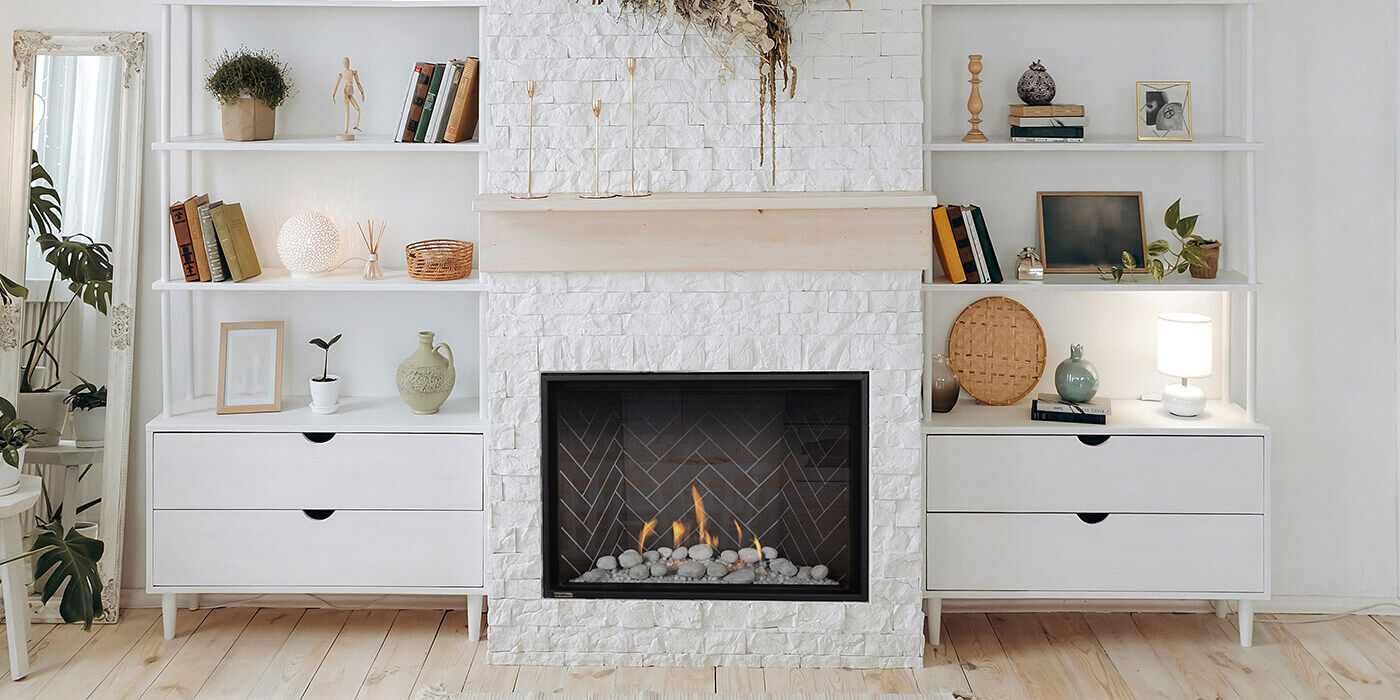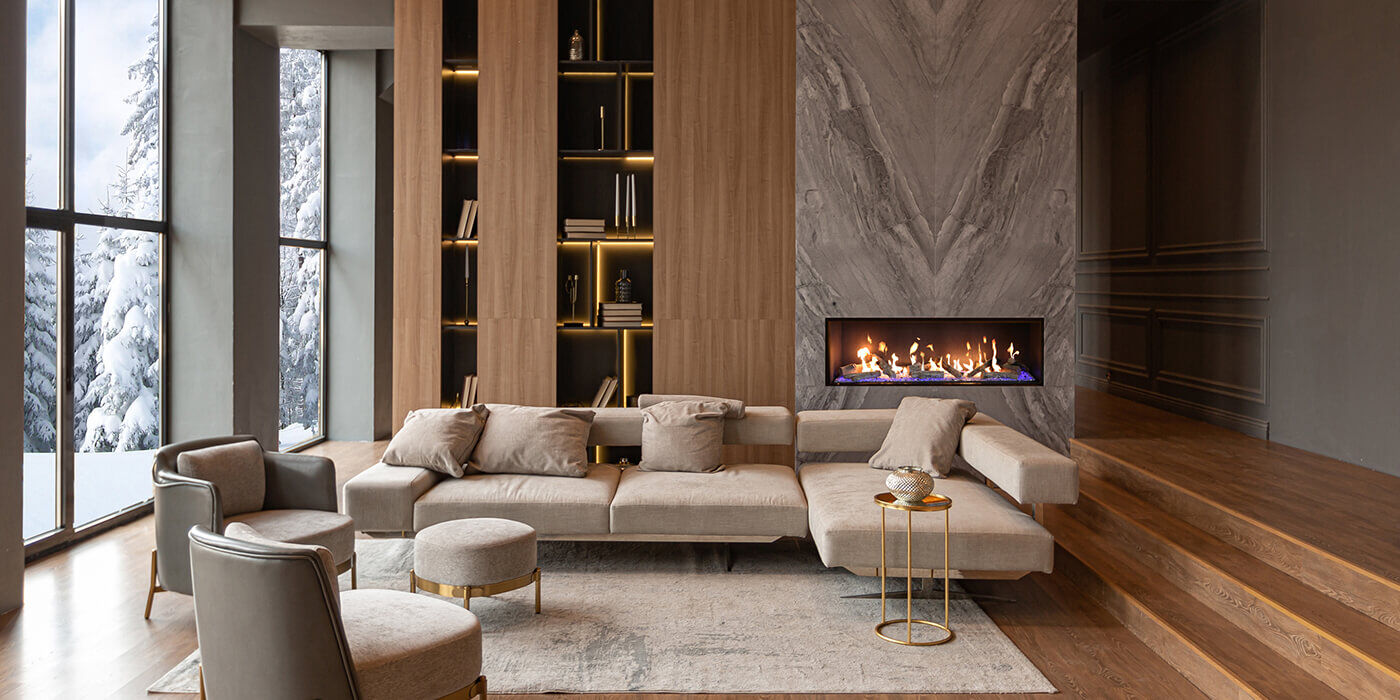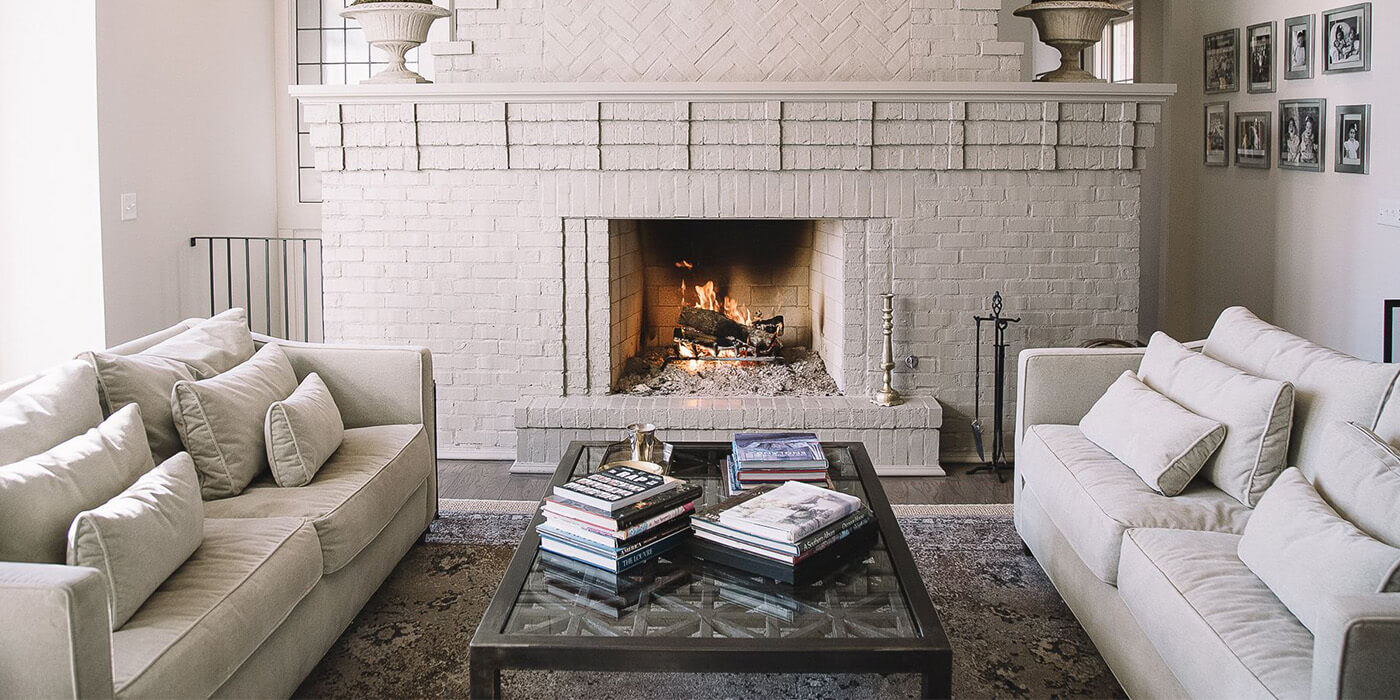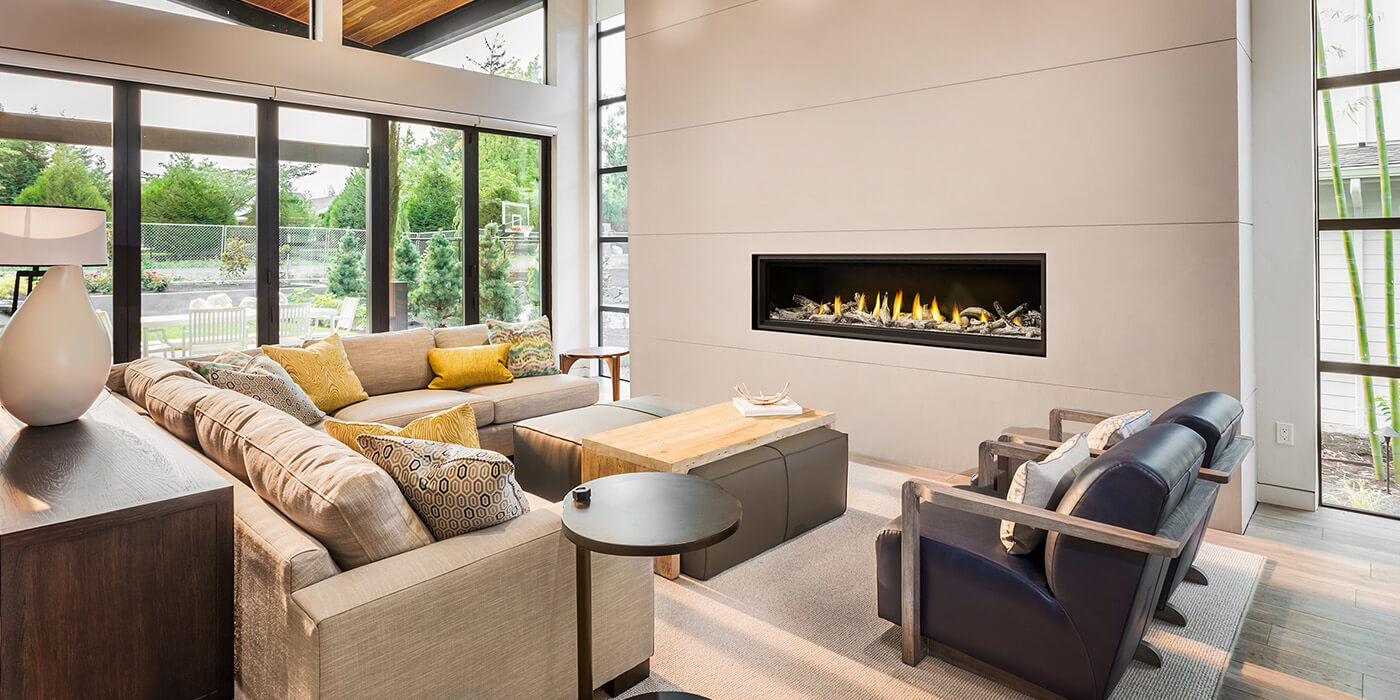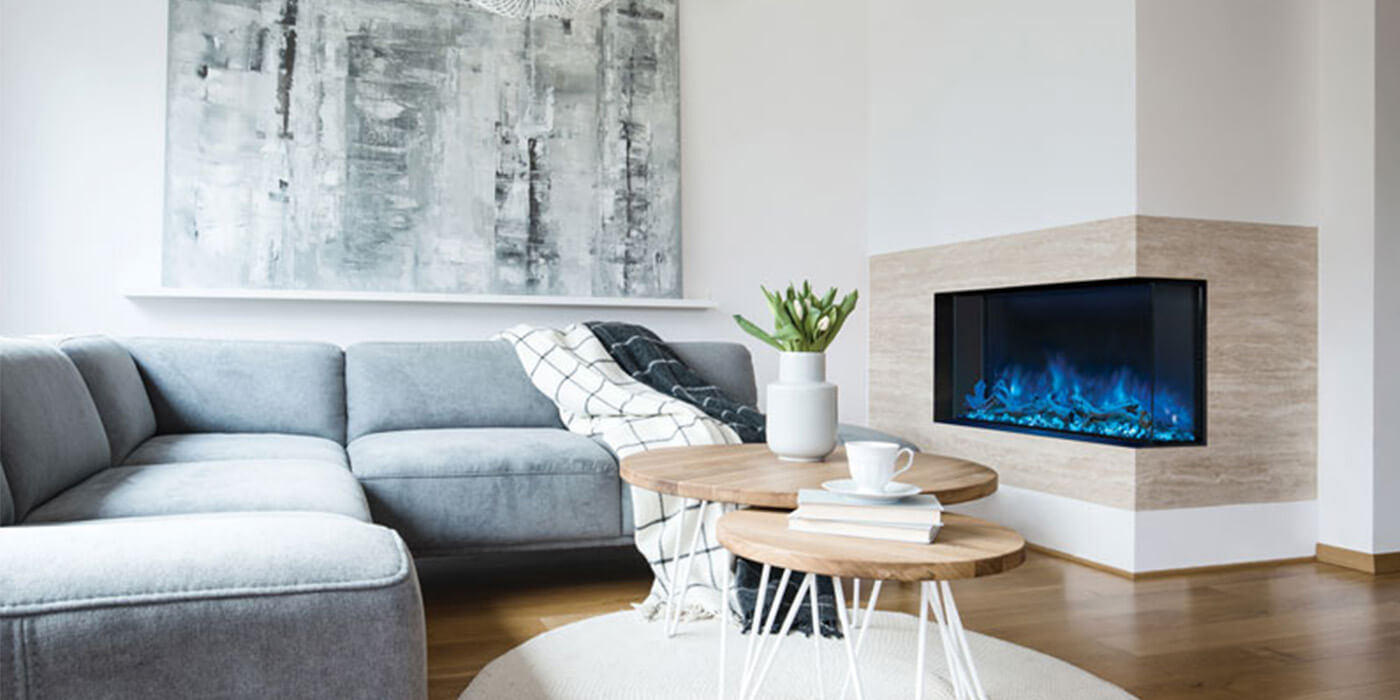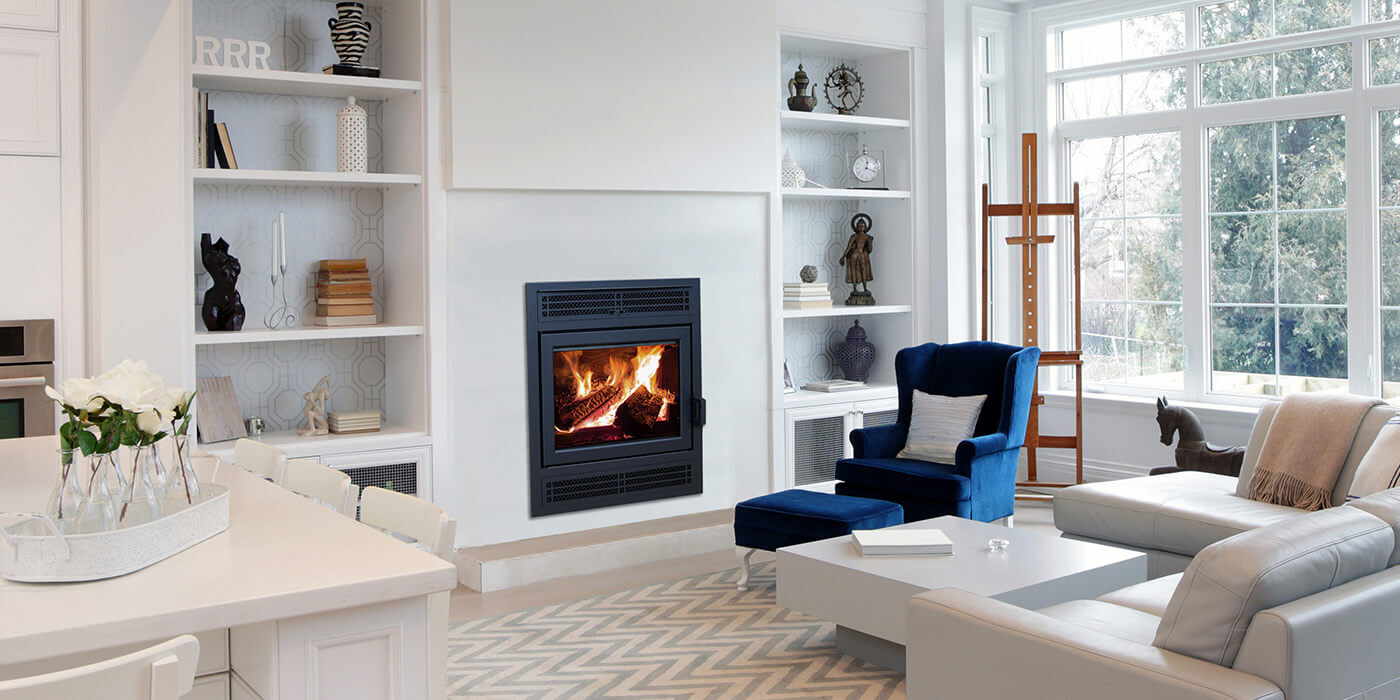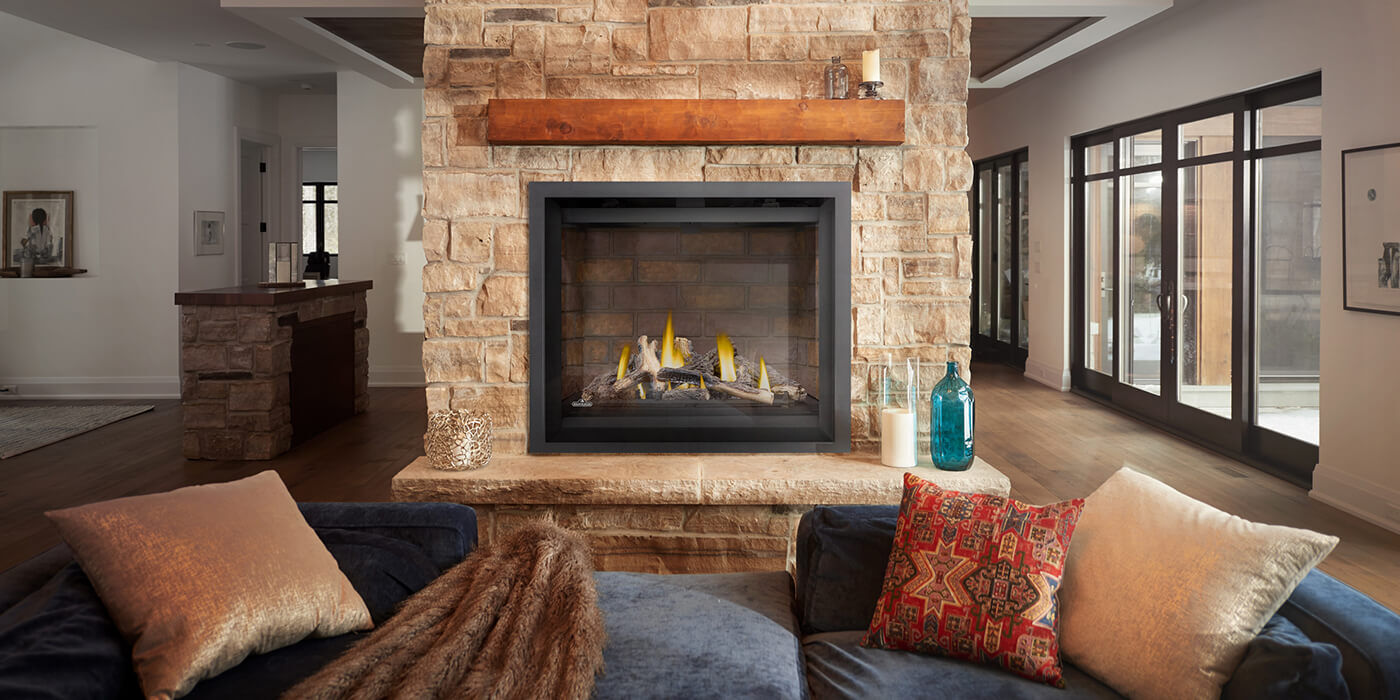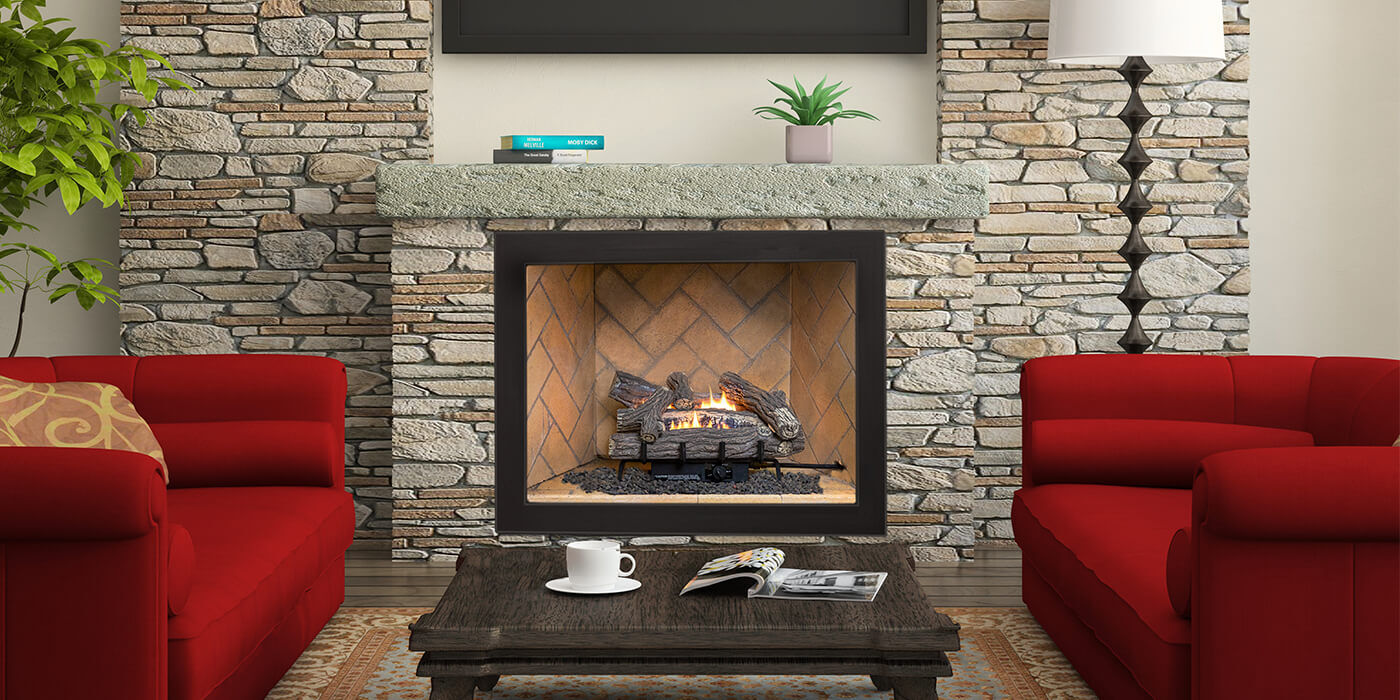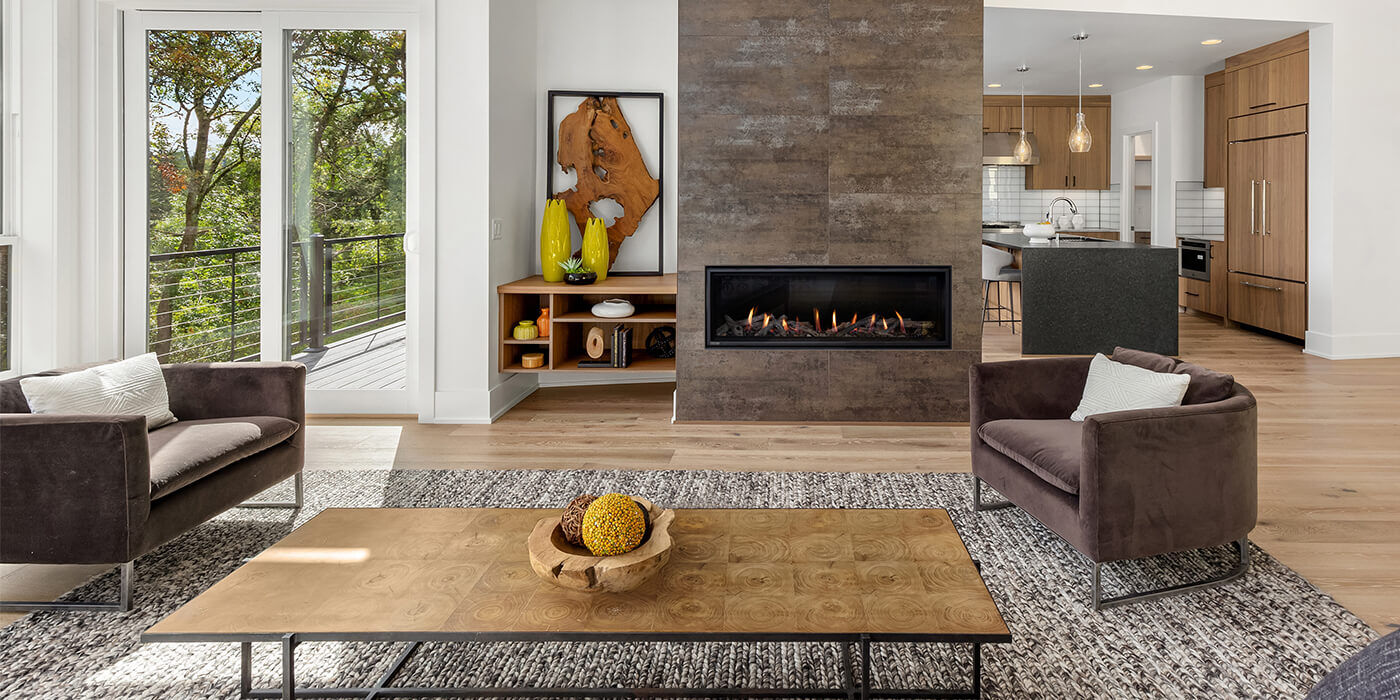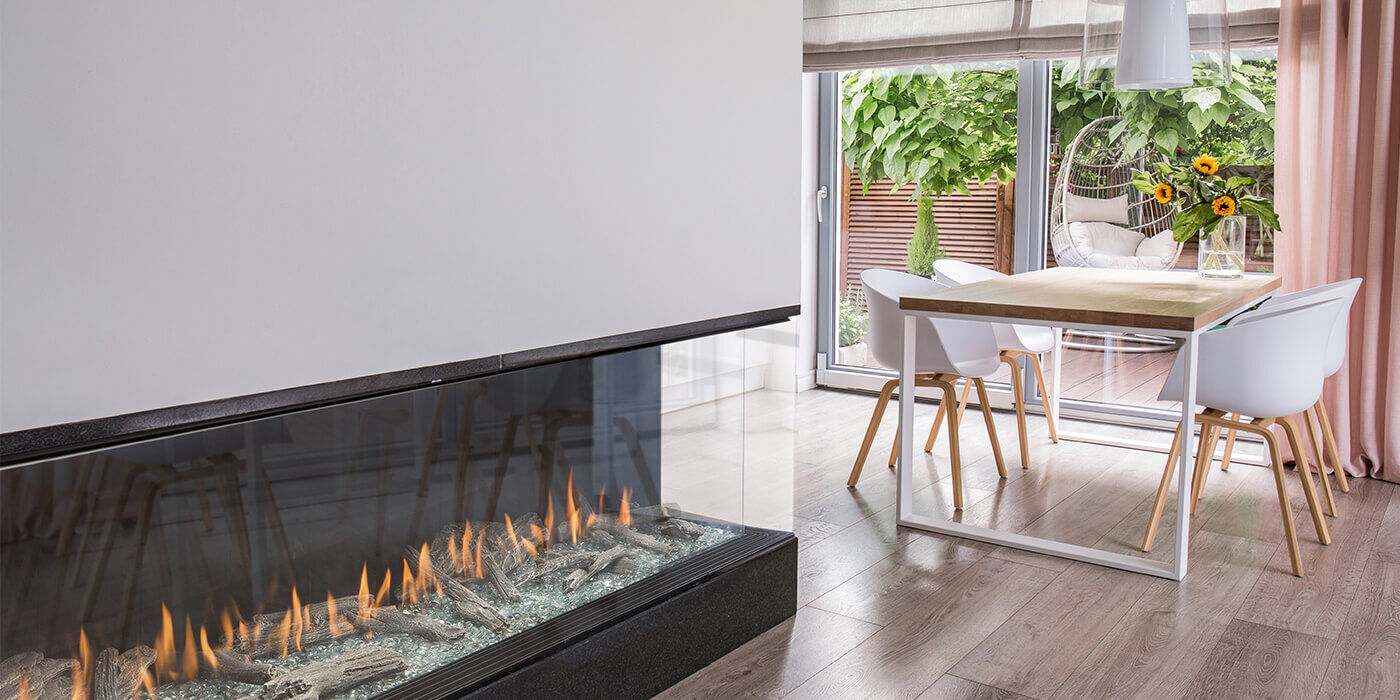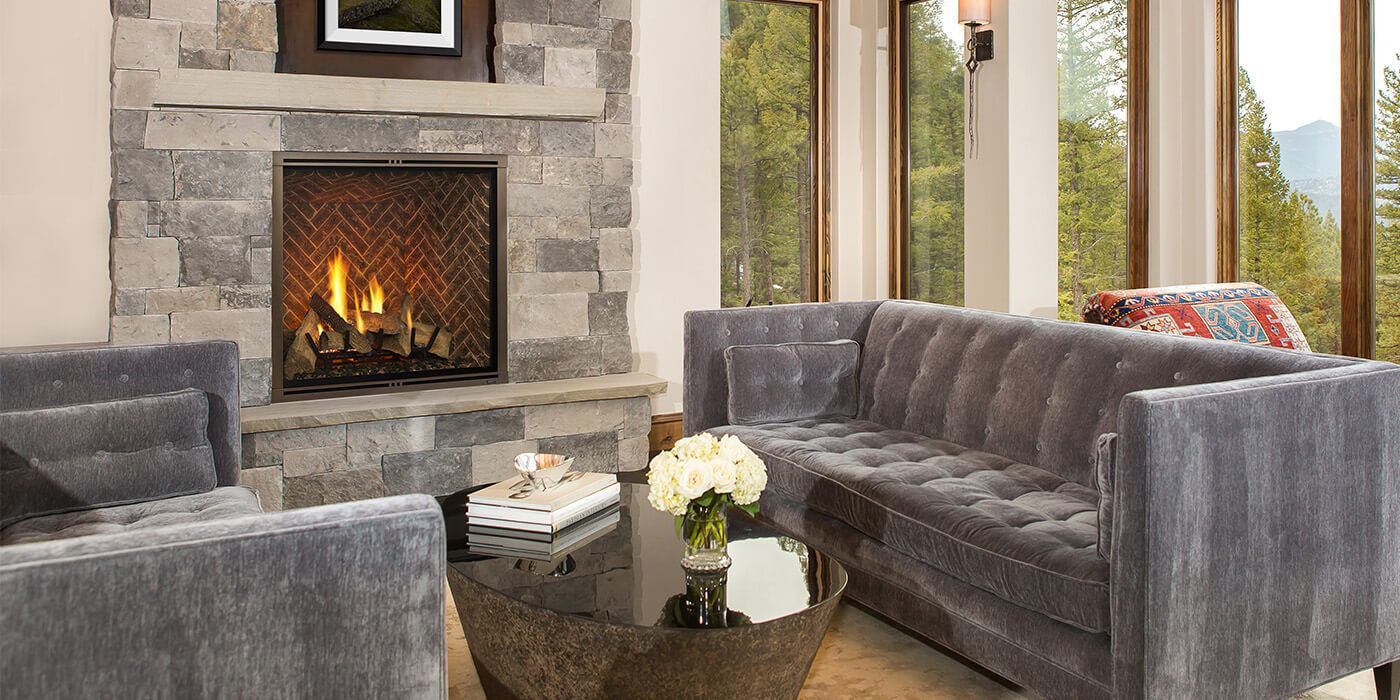By: Tom Regis, NFI Certified Master Hearth Professional
Last Updated: August 28, 2025
Imagine this: a chilly evening, your favorite blanket wrapped around you, a warm drink in hand, and a glowing fire that makes your entire living space feel like a cozy scene from a holiday movie. Perfect, right? The only thing missing is the fireplace itself.
If you’ve never purchased one before, choosing the right fireplace can feel a bit overwhelming. But don’t worry — we're here to help you narrow down your options.
Whether you’re building a new home, remodeling, or simply upgrading, this comprehensive guide will help you make an informed decision on the perfect fireplace for your space and lifestyle.
In This Article
- What type of fireplace are you looking for?
- Find your fireplace fuel source
- Built-in fireplaces vs inserts
- Finding the right fireplace size
- Customizing your fireplace design
- Installation & safety concerns
- What will maintenance look like?
- Setting a budget
- What kind of fireplace will fit your lifestyle?
- FAQs
Step 1: Decide on Your Fireplace Personality
Not all fireplaces are created equal. Some give you that crackle-and-pop wood burning vibe, while others are sleek, modern, and run with the touch of a button.
When deciding on a type of fireplace, ask yourself:
💡Do you want the experience of fire, or do you just need a primary heating source?
💡Do you want low maintenance or are you fine with some upkeep?
💡Do you want traditional charm or modern efficiency?
💡What kind of installation process can you commit to — a major renovation or just a simple home upgrade?
Your answers will guide you straight to the fireplace options you’ll love most, making the shopping process simple and enjoyable.
Step 2: Learn Your Fireplace Types
Let’s break down your main fireplace options.
Wood Burning Fireplaces
These are the timeless classics — the kind you might fondly remember from your grandparents’ home. Traditional wood burning fireplaces offer the authentic smell of burning wood, the comforting crackle, and radiant heat that fills the room.
However, they do require a chimney, a steady supply of firewood, and regular cleaning to keep them safe and efficient.
If you enjoy the hands-on ritual of stacking logs and watching the flames dance, a wood burning fireplace could be the perfect choice for you.
Gas Fireplaces
Gas fireplaces are all about ease and convenience. With just a flip of a switch or a click of a remote control, you can enjoy an instant, cozy fire.
They burn cleaner than traditional wood fireplaces, deliver consistent heat, offer temperature control, and eliminate the need to store and haul logs.
If you’re considering choosing a gas fireplace, remember that a gas line is required for proper venting, but overall maintenance is minimal, making them a low-hassle option for a warm and inviting home.
Electric Fireplaces
If your home doesn’t have a chimney or gas line, an electric fireplace is an excellent way to create a more inviting atmosphere.
Modern electric fireplaces are impressively realistic, providing the cozy glow of a fire with the flexibility to use heat or simply enjoy the ambiance year-round.
They’re eco-friendly, cost-effective, and easy to install, making them a smart choice for anyone who likes to refresh their décor or move things around without committing to a permanent installation.
Step 3: Inserts vs. Built-Ins
You may have heard the term “fireplace insert” and wondered what it means. Essentially, a fireplace insert is a self-contained firebox designed to fit into your existing fireplace opening.
It’s a smart way to get more efficient heating — some wood burning inserts can be up to 70% more efficient than traditional open fireplaces — update an older hearth and reduce heat loss.
Step 4: Match the Fireplace to Your Space
The size of your room, the insulation, and even the layout of your furniture can affect which fireplace works best.
These factors influence not only how much heat you’ll need, but also where the fireplace should be placed for maximum comfort and visual impact.
✅ Small rooms — Electric or small gas units are great options. They heat efficiently without overpowering the space.
✅ Large, open-concept areas — Bigger gas or wood burning models ensure warmth reaches across a wider area.
✅ Apartments or condos — Electric or Ventless gas fireplaces are the best options because they don't require a chimney or venting system.
Pro Tip:
Always check the heating capacity (in BTUs or watts) so you’re not under- or over-heating the space.
Step 5: Think About Style
A fireplace is as much a design feature as it is a heat source. You’ll want one that blends beautifully with your home decor and draws the eye in, setting the tone for the room.
Adding a high-quality fireplace not only increases your home’s aesthetic appeal, but it also boosts its overall value. In fact, 77% of buyers are willing to pay more for a home with a fireplace.
The right style, materials, and finish can make it feel like a natural extension of your home’s personality.
💡 Traditional brick or stone works with rustic or farmhouse styles.
💡 Sleek glass and metal fit perfectly in modern or industrial designs.
💡 Mantel surrounds let you decorate seasonally and create a focal point.
Step 6: Installation Requirements & Safety Considerations
No matter which style you choose, proper installation is essential for safety and function.
Wood burning fireplaces require a chimney and must comply with local building codes and clearances to ensure safe operation. Gas fireplaces need professional installation for gas lines. Electric models are the simplest to set up — but even then, always follow the manufacturer’s safety instructions.
You’ll also want to invest in:
✅ Carbon monoxide detectors for any fuel-burning fireplace.
✅ Fire-resistant materials around the fireplace.
✅ Regular maintenance to keep it safe and efficient.
Step 7: Maintenance Reality Check
Here’s the truth: every fireplace has some upkeep. For example, creosote buildup in wood burning fireplaces is a leading cause of chimney fires, contributing to an estimated 25,000 chimney fires in the U.S. each year.
Doing regular maintenance ensures your fireplace runs safely and efficiently for as long as possible, whether it’s cleaning the chimney, replacing filters, checking gas lines, or inspecting for other safety hazards.
✅ Wood burning — Chimney cleaning once or twice a year, plus ash removal.
✅ Gas — Annual inspection to check connections and burner function.
✅ Electric — Wipe down and dust occasionally; otherwise, zero fuss.
Think about how much effort you’re willing to put in before making your decision.
Step 8: Your Project Budget
Budget plays a big part when narrowing down your fireplace options.
✅ Electric — most affordable both upfront and long term.
✅ Gas — more expensive initially but cost-effective for frequent use. For example, Natural Gas fireplaces can save up to 30% on heating costs compared with electric.
✅ Wood burning — units vary, depending on whether you already have a chimney or need one built.
Remember to factor in installation, permits, and long-term fuel costs. Sometimes a higher upfront price pays off in efficiency and lower monthly bills.
Step 9: Your Lifestyle Factor
Here’s the final and maybe most important step. Your fireplace should suit you. Homeowners who choose a fireplace type that fits their lifestyle report higher satisfaction with their living spaces, with surveys showing over 80% feel it improves comfort and enjoyment.
If you love the process, tradition, and nostalgic smell, go with a classic wood burning fireplace. If you want instant, mess-free ambiance and energy efficiency, go with gas or electric. The right choice makes your home warmer, cozier, and more you.
FAQs
Measure your room’s square footage and check the fireplace’s heat output rating.
For small rooms, 5,000-10,000 BTUs is plenty; for large spaces, you might need 20,000 BTUs or more.
Always size for efficiency — too small won’t warm enough, too big will overheat quickly.
Absolutely. Gas and electric fireplaces can all be installed without a chimney or venting system.
Some vent through a flue in the wall, while others are completely Ventless.
This makes them perfect for condos, apartments, or additions without proper ventilation.
Not usually. Most electric fireplaces use roughly the same electricity as a space heater, costing $0.10 - $0.24 per hour depending on wattage and local rates (energy.gov).
Using the flame effect alone costs only a few cents per hour, offering cozy ambiance without significantly raising your energy bill.
Electric fireplaces are generally the safest since they don’t produce carbon monoxide, emissions, or real flames. They also offer the most versatility as far as installation location.
That said, any fireplace is safe if it’s installed correctly, maintained regularly, and used according to manufacturer guidelines.
You can handle electric fireplace installation yourself in most cases.
Gas and wood burning units require professional installation for safety and to meet building codes. Cutting corners here can be dangerous and costly in the long run.
We’re Here to Help
Do you have more questions or need help deciding on a fireplace style? Call our NFI certified experts today at 800.919.1904.
More Resources
Find out how adding a fireplace can increase the value of your home.
Learn the differences between Direct Vent and Ventless gas fireplaces.
See if it’s safe to hang a TV over your fireplace.
 |
Thomas Regis has been a Technical Sales Representative at Woodland Direct for four years. An NFI-Certified expert, Thomas effortlessly directs his clients toward the perfect products, offering essential installation and safety advice. He's tackled projects of all sizes, from backyard fire pits to custom indoor fireplaces. He has even helped Amy Adams, owner of the Tennessee Titans, find a new fireplace for her home! Beyond his professional achievements, Thomas actively participates in community service projects and enjoys spending time on the basketball court. Call him or one of our experts in fire at 800.919.1904. |
